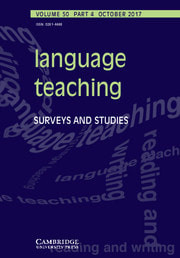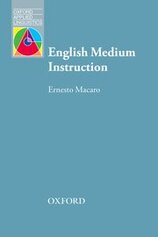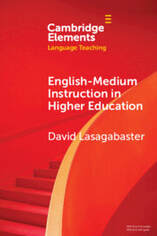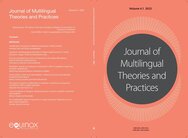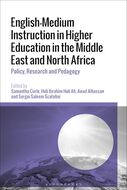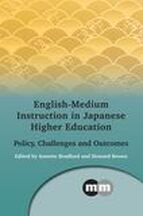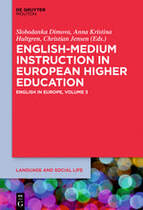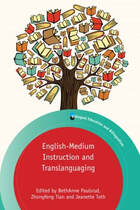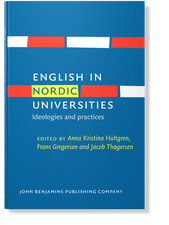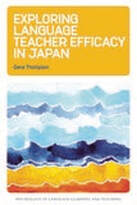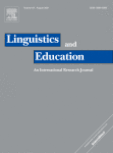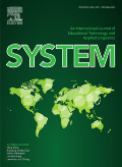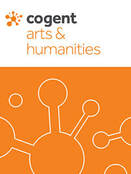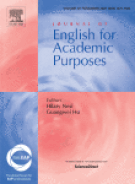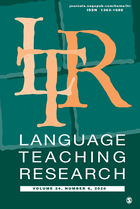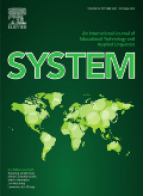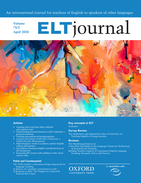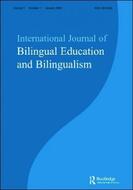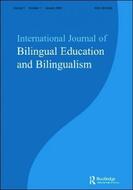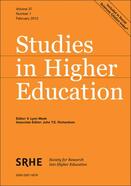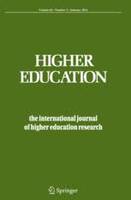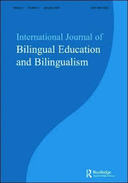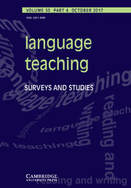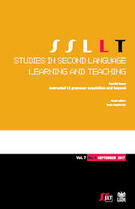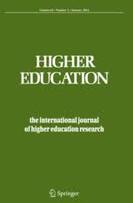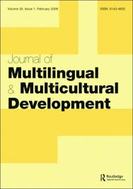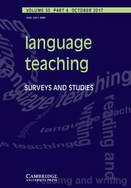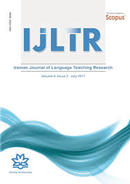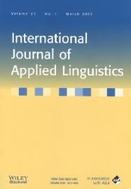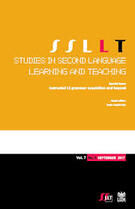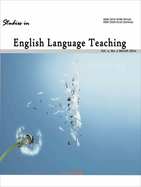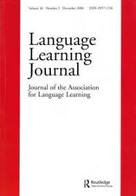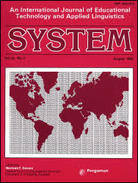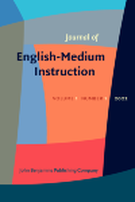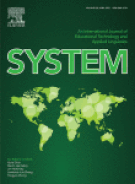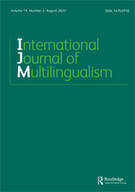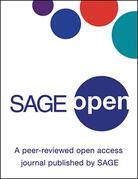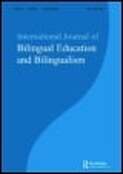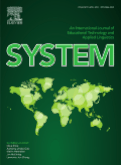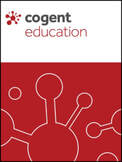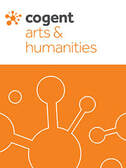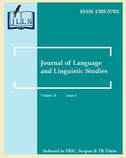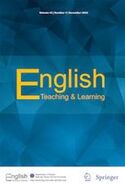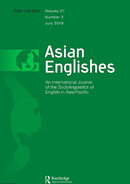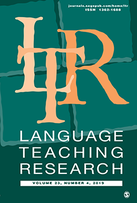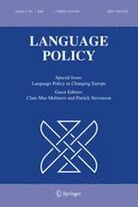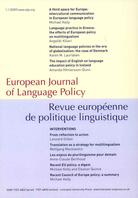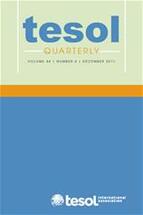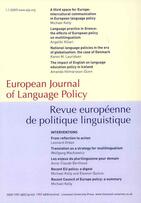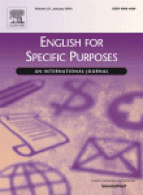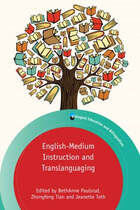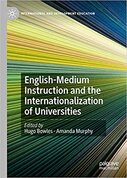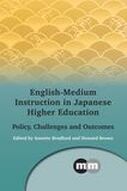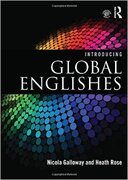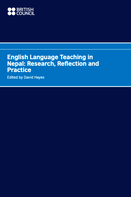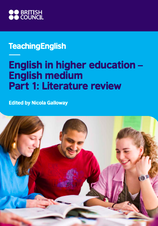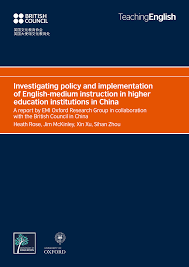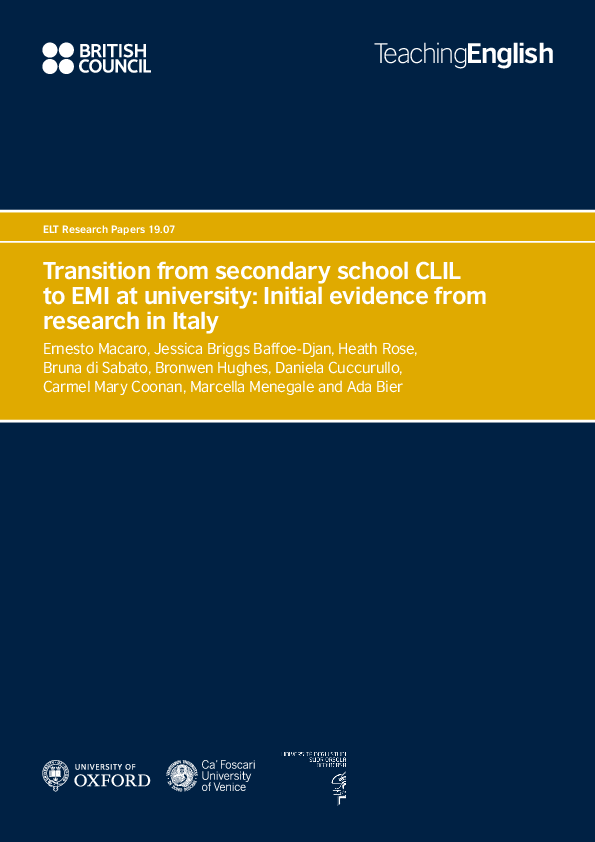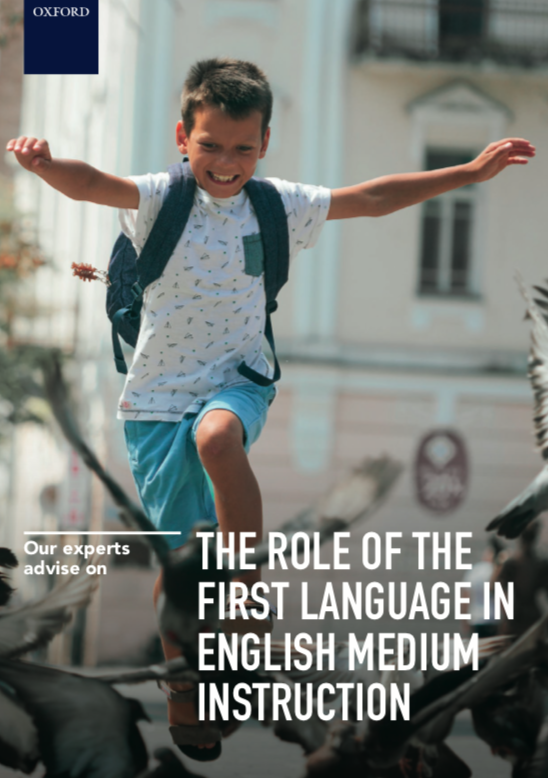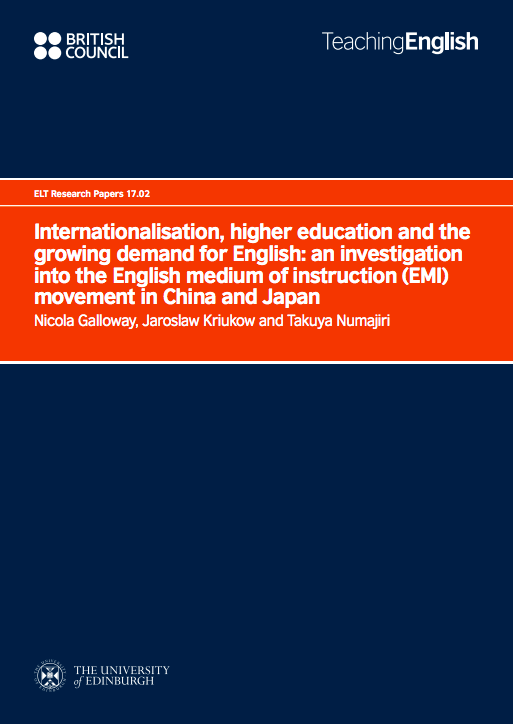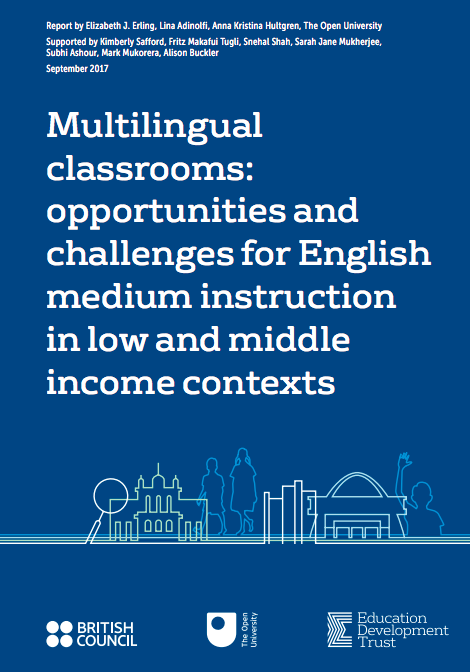FEATURED PUBLICATIONS Macaro, E. (2018). English Medium Instruction: Content and language in policy and practice. Oxford: Oxford University Press.
Macaro, E., Curle, S., Pun, J., An, J., & Dearden, J. (2018). A systematic review of English Medium Instruction in Higher Education. Language Teaching, 51(1): 36-76. |
EMI Oxford Research Group and Network Publications
(since 2015)
This page lists all publications emerging from the EMI Oxford research group and research network, which were published after 2015.
It includes links to original papers and author versions, where the publisher allows self-archiving. Please note that author versions are not the definitive publisher version, and lack pagination. However they may be useful for people lacking journal subscriptions. To view recorded presentations, or see a list of other plenary speeches and invited talks, please go to the presentations page.
It includes links to original papers and author versions, where the publisher allows self-archiving. Please note that author versions are not the definitive publisher version, and lack pagination. However they may be useful for people lacking journal subscriptions. To view recorded presentations, or see a list of other plenary speeches and invited talks, please go to the presentations page.
ACADEMIC BOOKS & EDITED COLLECTIONS (Research Group)
|
Macaro, E. (2018). English Medium Instruction: Content and language in policy and practice. Oxford: Oxford University Press.
|
ACADEMIC BOOKS & EDITED COLLECTIONS (Research Network)
|
Lasagabaster, D. (2022). English-Medium Instruction in Higher Education (Elements in Language Teaching). Cambridge: Cambridge University Press. doi:10.1017/9781108903493
Lasagabaster, D., & Doiz, A. (Eds.). (2023). Special Issue: The Impact of the Use of English as Medium of Instruction on Classroom Interaction. Journal of Multilingual Theories and Practices, 4(1).
Curle, S., Holi, I.H., Alhassan, A., & Saleem, S. (2022). English-medium instruction in higher education in the Middle East and North Africa: Policy, research and pedagogy (Eds.). Bloomsbury Publishing Plc. ISBN: 9781350238541.
|
SÁNCHEZ-PÉREZ, MARÍA DEL MAR. (2020). Teacher Training for English-Medium Instruction in Higher Education. Hershey, PA: IGI-GLOBAL. ISBN: 9781799823186. Paulsrud, B., Tian, Z., & Toth, J. (Eds.) (2021). English-Medium Instruction and Translanguaging. Bristol: Multilingual Matters. Bradford, A. & Brown, H. (Eds.), English-Medium Instruction at Universities in Japan: policy, challenges and outcomes. Bristol: Multilingual Matters. Hultgren, A. K., F. Gregersen and J. Thøgersen. (2014). English in Nordic Universities. Benjamins. Slobodanka, D., A. K. Hultgren and C. Jensen. (2015). English-Medium Instruction in European Higher Education. Mouton de Gruyter. Thompson, G. (2020). Exploring Language Teacher Efficacy in Japan. Bristol: Multilingual Matters.
ACADEMIC ARTICLES in RESEARCH JOURNALS (Research Group)
|
An, J. & Thomas, N. (2021). Students' beliefs about the role of interaction for science learning and language learning in EMI science classes: Evidence from high schools in China. Linguistics and Education, Volume 65, 100972. https://doi.org/10.1016/j.linged.2021.100972
An, J., Macaro, E., Childs, A. (2021) Classroom interaction in EMI high schools: Do teachers who are native speakers of English make a difference? System, https://doi.org/10.1016/j.system.2021.102482
Macaro, E., & Tian, L. (2020). Developing EMI teachers through a collaborative research model, Journal of Multilingual and Multicultural Development, DOI: 10.1080/01434632.2020.1862131
Kamaşak, R., Sahan, K. & Rose, H. (2020). Academic language-related challenges at an English-medium university. English for Academic Purposes, 49, 100945, DOI: https://doi.org/10.1016/j.jeap.2020.100945
Aizawa, I., Rose, H., Thompson, G., & Curle, S. (2020). Beyond the threshold: Exploring English language proficiency, linguistic challenges, and academic language skills of Japanese students in an English medium instruction programme. Language Teaching Research. https://doi.org/10.1177/1362168820965510
Aizawa, I, & Rose, H (2020) “High school to university transitional challenges in English Medium Instruction in Japan”, System. 102390-102390.DOI: http://doi.org/10.1016/j.system.2020.102390
Sahan, K. (2020). ELF interactions in English-medium engineering classrooms, ELT Journal, , ccaa033. https://doi.org/10.1093/elt/ccaa033
Macaro, E. (2020). Exploring the role of language in English medium instruction. International Journal of Bilingual Education and Bilingualism: Special Issue on The Role of Languages in English-Medium Instruction (EMI) at University, 23(3), 263-276.
Thompson, G., Aizawa, I., Curle, S., & Rose, H. (2019). Exploring the role of self-efficacy beliefs and learner success in English Medium Instruction. International Journal of Bilingual Education and Bilingualism. DOI: 10.1080/13670050.2019.1651819.
Rose, H., Curle, S., Aizawa, I., & Thompson, G. (2019). What drives success in English medium taught courses? The interplay between language proficiency, academic skills, and motivation. Studies in Higher Education. https://doi.org/10.1080/03075079.2019.1590690.
Aizawa, I. & Rose, H. (2019). An analysis of Japan's English as medium of instruction initiatives within higher education: the gap between meso-level policy and micro-level practice. Higher Education (advanced online access) DOI: 10.1007/s10734-018-0323-5.
|
|
Pun, J. & Macaro, E. (2018): The effect of first and second language use on question types in English medium instruction science classrooms in Hong Kong, International Journal of Bilingual Education and Bilingualism, DOI: 10.1080/13670050.2018.1510368
Macaro, E., Curle, S., Pun, J., An, J., & Dearden, J. (2018). A systematic review of English Medium Instruction in Higher Education. Language Teaching, 51(1): 36-76.
|
|
Briggs, J., Dearden, J. & Macaro, E. (in press). English medium instruction: Comparing teacher beliefs in secondary and tertiary education. Studies in Second Language Learning and Teaching. 8 (3). 2018. 673-696
|
|
Rose, H., & McKinley, J. (2018). Japan’s English-medium instruction initiatives and the globalization of higher education. Higher Education, 111–129.
|
|
Macaro, E., & Akincioglu, M. (2018). Turkish university students’ perceptions about English Medium Instruction: exploring year group, gender and university type as variables. Journal of Multilingual and Multicultural Development, 39(3): 256-270.
|
|
Macaro, E. (2017). English medium instruction: Global views and countries in focus. Language Teaching. 1-18
|
|
Briggs, J.G. & Smith, S.A. (2017). English Medium Instruction and Idiomaticity in English as a Lingua Franca. Iranian Journal of Language Teaching Research, 5(3): 27-44.
|
|
Zhao, T., & Macaro, E. (2016). What works better for the learning of concrete and abstract words: Teachers' L1 use or L2-only explanations? International Journal of Applied Linguistics, 26(1): 75-98.
|
|
Dearden, J., & Macaro, E. (2016). Higher education teachers’ attitudes towards English medium instruction: A three-country comparison. Studies in Second Language Learning and Teaching, 6(3): 455-
|
|
Macaro, E., Akincioglu, M., & Dearden, J. (2016). English medium instruction in universities: A collaborative experiment in Turkey. Studies in English Language Teaching, 4(1).
|
|
Lo, Y.Y. & Macaro, E. (2015). Getting used to content and language integrated learning: what can classroom interaction reveal? Language Learning Journal, 43(3): 239-255.
|
|
Macaro, E. & Tian, L. (2015). Exploring teachers' oral explanations of new English lexical items in a Chinese university: Comparisons with dictionary information. System, 52: 78-90.
|
ACADEMIC ARTICLES in RESEARCH JOURNALS (Research Network)
|
Lasagabaster, D. (2022). Teacher preparedness for English-Medium instruction. Journal of English-Medium instruction. 1, 48-64, https://doi.org/10.1075/jemi.21011.las
Doiz, A. & Lasagabaster, D. (2022). Looking into English-medium instruction teachers’ metadiscourse: An ELF perspective, System, 105, https://doi.org/10.1016/j.system.2022.102730
Serna-Bermejo, I. & Lasagabaster, D. (2022). Translanguaging in Basque and English: Practices and Attitudes of University Teachers and Students. International Journal of Multilingualism, https://doi.org/10.1080/14790718.2022.2086984
Alhassan, A. (2021). Challenges and Professional Development Needs of EMI Lecturers in Omani Higher Education. SAGE Open, 11(4), 1-12.
Ismailov, M., Chiu, TKF., Dearden, J., Yamamoto, Y., & Djalilova, N. (2021). Challenges to Internationalisation of University Programmes: A Systematic Thematic Synthesis of Qualitative Research on Learner-Centred English Medium Instruction (EMI) Pedagogy. Sustainability, 13(22),12642. https://doi.org/10.3390/su132212642
Rahman, M.M., & Singh, M.K.M. (2021). English Medium university STEM teachers’ and students’ ideologies in constructing content knowledge through translanguaging. International Journal of Bilingual Education and Bilingualism, 1-21. DOI:10.1080/13670050.2021.1915950
Karim, A., Kabilan, M. K., Ahmed, Z., Reshmin, L., & Rahman, M. M. (2021). The Medium of Instruction in Bangladeshi Higher Education Institutions: Bangla, English, or Both?. Journal of Language, Identity & Education, 1-15.
Alhassan, A., Bora S. F., & Abdalla, Y. A. (2021). Collaboration with EAP teachers in English-medium instruction contexts in higher education: Content lecturer perspectives. TESOL Journal, DOI: https://doi.org/10.1002/tesj.610.
SÁNCHEZ-PÉREZ, MARÍA DEL MAR (2021). Predicting content proficiency through disciplinary-literacy variables in English-medium writing. System, 97. https://doi.org/10.1016/j.system.2021.102463 Alhassan, A., Ali, N. A., & Holi. I. H. (2021). EFL students’ challenges in English-medium business programmes: Perspectives from students and content teachers. Cogent Education, 8(1), 1-15. https://doi.org/10.1080/2331186X.2021.1888671
Holi, I. H. (2020). Lecture comprehension difficulties experienced by Omani students in an English-medium engineering programme, Cogent Arts & Humanities, 7:1, https://doi.org/10.1080/23311983.2020.1741986
Holi, I. H. (2020). Internal stakeholders’ voices for overcoming the challenges presented by studying engineering through the medium of English in Oman: Journal of Language and Linguistic Studies, 16(4), 2113-2129.
Rahman, M.M., Singh, M.K.M., Johan, M., & Ahmed, J. (2019). English Medium Instruction Ideology, Management and Practices: a Case Study of Bangladeshi Private University. English Teaching & Learning (2019). https://doi.org/10.1007/s42321-019-00036-z Rahman, M. M., Singh, M. K. M., & Karim, A. (2019). Distinctive medium of instruction ideologies in public and private universities in Bangladesh. Asian Englishes, 1-18. doi.org/10.1080/13488678.2019.1666493 Rahman, M. M., & Singh, M.K.M. (2019). Language ideology of English-medium instruction in higher education: A case study from Bangladesh. English Today, 1-7. doi:10.1017/S0266078419000294 Alhassan, A. (2019). EFL postgraduate students’ learning needs on English-medium business programmes: An exploratory study. Language Teaching Research. https://doi.org/10.1177/1362168819857861
Erling, E.J. and S. K. Hilgendorf (2006). Language policies in the context of German higher education. Language Policy. 5:3, 267-293.
|
|
Lanvers, U., and Hultgren, K. (2018). The Englishization of European education: Foreword. European Journal of Language Policy 10(1): 1–11.
|
|
Coleman, J. , Hultgren, K. , Li, W. , Tsui, C. C. and Shaw, P. (2018). Forum on English‐medium Instruction. TESOL Q, 52: 701-720. doi:10.1002/tesq.469
|
|
Blattès, M. (2018). Policy development for English-medium instruction in French universities, European Journal of Language Policy, Vol. 10(1): 13-37. |
|
Basturkmen, H. (2018). Dealing with language issues during subject teaching: The perspectives of two accounting lecturers. TESOL Quarterly, 52, 3: 692-700.
|
|
Basturkmen, H. & Shackleford, N. (2015). How content lecturers help students with language: An observational study of language-related episodes in first-year accounting classes. English for Specific Purposes, 37: 87-97.
|
BOOK CHAPTERS (Research Group)
|
Sahan, K., & Rose, H. (2020). Problematising the E in EMI: Translanguaging as a Pedagogic Alternative to English-Only Hegemony in University Contexts, in Paulsrud,B., Tian, Z., & Toth, J. (Eds.), English-Medium Instruction and Translanguaging. (Chapter one). Bristol: Multilingual Matters.
Aizawa, I., & McKinley, J. (2020). EMI Challenges in Japan’s Internationalization of Higher Education, in Bowles, H., & Murphy, A. (Eds.), English-Medium Instruction and the Internationalization of Universities. (pp. 27-48). Palgrave Macmillan.
McKinley, J. (2018). Making the EFL to ELF transition at a Global Traction University, in Bradford, A. & Brown, H. (Eds.), English-Medium Instruction at Universities in Japan: policy, challenges and outcomes (pp. 238-249). Bristol: Multilingual Matters. |
|
Rose, H. & Galloway, N. (2018, forthcoming). Global Englishes for Language Teaching. Cambridge: Cambridge University Press.
|
|
Galloway, N. & Rose, H. (2015). Introducing Global Englishes. Abingdon: Routledge.
|
BOOK CHAPTERS (by Research Network members)
|
Ojha, L. P. (2018). Shifting the medium of instruction to English in public schools: Policies, practices and challenges in Nepal. In D. Hayes (Ed.), English language teaching in Nepal: Research, reflection and practice (pp. 189-198). Kathmandu: British Council.
|
RESEARCH REPORTS (Research Group)
|
Curle, S., Jablonkai, R., Mittelmeier, J., Sahan, K., & Veitch, A. (2020). English in higher education – English medium Part 1: literature review. Online: British Council.
Rose, H., McKinley, J., Xu, X., & Zhou, S. (2020). Investigating policy and implementation of English medium instruction in higher education institutions in China. Beijing: British Council. Macaro, E, Briggs Baffoe-Djan, J, Rose, H, di Sabato, B, Hughes, B, Cuccurullo, D, Coonan, CM, Menegale, M, Bier, A (2019). Transition from secondary school CLIL to EMI at university: Initial evidence from research in Italy. Online: British Council. Chalmers, H. (2019). The Role of the first language in English Medium Instruction. OUP ELT Position Paper. Available at: https://elt.oup.com/feature/global/expert/emi?cc=gb&selLanguage=en
Galloway, N., Kriukow, J., and Numajiri, T. (2017). Internationalisation, Higher Education and the Growing Demand for English: An Investigation into the English Medium of Instruction (EMI) Movement in China and Japan. The British Council. |
RESEARCH REPORTS (Research Network)
|
Erling, E.J., Adinolfi, L., and Hultgren, A.K. (2017). Multilingual classrooms: Opportunities and challenges for English medium instruction in low and middle income countries. Reading: Education Development Trust.
|
